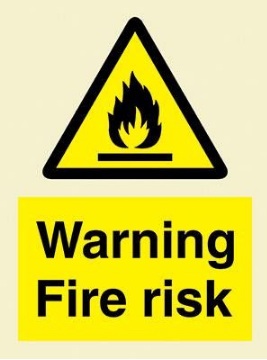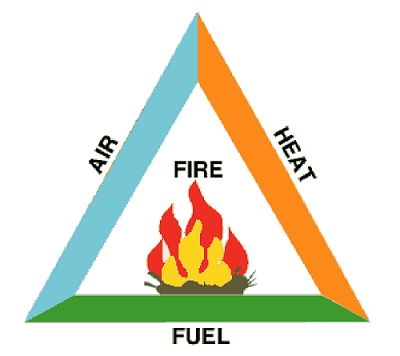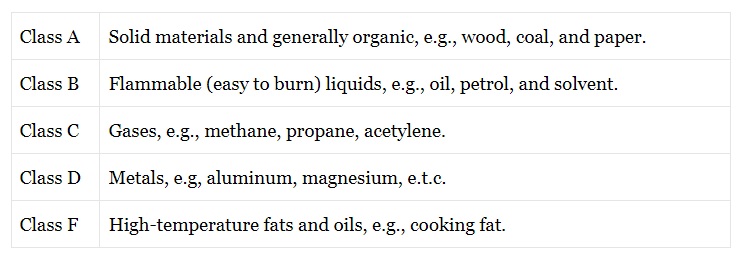This article is related to fire hazards and other aspects of fire hazards. This is the most common type of risk. Fire is the rapid oxidation of substances during an exothermic chemical combustion process, in which light, heat, and many reaction products are released. The danger posed by fire is called a fire hazard. Fire safety is a set of measures aimed at minimizing damage caused by fire.
These measures include measures to stop the occurrence of uncontrolled fires and measures to limit the occurrence and consequences of fires after they have occurred. Fire safety measures include activities planned during building construction, activities carried out in standing buildings and activities for educating the residents of the house.

Table of Contents
Elements of Fire Hazard:
The fire triangle consists of the three main components element that makes fire happen.
I have attached the image of the fire triangle which consists of Oxygen, heat, and fuel.

1. Fuel:
Fuels are composed of combustible and combustible substances that encompass all states of agglomeration. These include:
- Wood, plastics, combustible solids such as paper, packaging, and materials used in packaging, velvet-upholstered furniture, and decorative items susceptible to fire, and even metals such as magnesium.
- Combustible solids such as magnesium (refined brand particles such as powder).
- Liquids such as gasoline, paints, chemicals, solvents, and oils.
- Combustible gases such as hydrogen, LPG, and methane
2. Oxygen
Air or oxygen plays an important role in a fire hazard. Oxygen is the main factor when talking about combustion. All types of combustion require oxygen. Rare cases such as flammable chemical reactions with chlorine. sulfur substances. However, this is very rare. Otherwise, oxygen is just as important to fire as a person’s breathing. We would not be mistaken if oxygen gave life to spreading fire. The higher the oxygen content in the air, the longer the combustion will last.
The most common source of oxygen in the air we breathe, but other sources such as oxygen tanks or oxidants can be used as well.
3. Heat:
It is often said that ignition requires only oxygen and fuel, but this is not always the case. Fire is exothermic. It dissipates heat. So even a small amount of heat can cause a big fire. This is because even a small thermal flame will release more heat to the surrounding material, which will combine with fuel and air to ignite quickly. Heat can be produced by a variety of ignition sources.
Fire Classes
In the below image I have shown various fire classes.

Sources of Fire Hazard:
- Direct Burning.
- Convection.
- Conduction.
- Radiation or emission of rays.
- The heat generated by nuclear decomposition
- Highly flammable gases such as oxygen. (oxygen-enriched environment can cause a fire.)
General Causes of Fire
- Electrical Equipment
- Smoking
- Chemicals and Gasses
- Candles
- Intentional ignition
- Cooking food
How to Identify Risk Related to Fire Hazard?
Most importantly, we must be aware of the activities and hazards in the workplace that can trigger an initiating fire, become a major fire hazard, and affect the people, communities, and communities who work there.
We are conducting risk assessments to ensure that the correct level of control is in place, and in the event of a fire spreading, we are implementing emergency procedures to immediately evacuate workers and rescue the public.
It protects the life and environment of workers and prevents various direct and indirect costs associated with fire accidents.
Fire risk assessment is also a legal requirement and must be complied with.
Control Measures of Fire Hazard
Here are the control measures of fire hazards which should be addressed to make a fire prevention plan.
- Control of the source of ignition
- Storage of Liquefied Petroleum gas (LPG)
- Safe Storage of Flammable Liquids in the Workplace
- Fire Safety Alarms and Fighting
- Evacuation After Fire
- Signs and notices